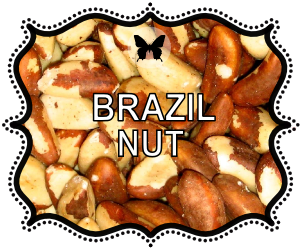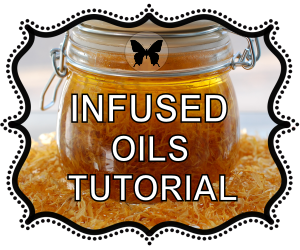
Table of Contents
What is Brazil Nut Oil?
Specifications
How to Use Brazil Nut Oil





The Brazil nut (Bertholletia excelsa) is a large tree native to the Amazon rainforest which spans across several South American countries, including Brazil, Peru, Colombia, Venezuela, and Ecuador. While the Brazil nut tree is native to the Amazon, it is found primarily in the northern part of the Amazon basin. The largest populations are in Brazil and Peru. The Brazil nut tree is one of the tallest trees in the Amazon rainforest, reaching heights of up to 50 meters (160 feet). It can live for several centuries.Brazil nuts are known for their rich nutritional profile. They are a good source of selenium, healthy fats, and protein. The nuts are often eaten raw or used in cooking, baking, and as an ingredient in various dishes. Overall, the Brazil nut is a remarkable tree with cultural, ecological, and economic significance in the Amazon rainforest. Its unique growth habits and reliance on specific environmental conditions make it a fascinating and important component of the rainforest ecosystem.
The Brazil nut tree produces large fruits known as capsules or pods. Each fruit can weigh up to 2 kilograms and contains 12 to 24 triangular seeds, commonly known as Brazil nuts. The seeds are encased in a hard woody shell. The primary method of seed dispersal for the Brazil nut tree is through agoutis, a type of rodent. Agoutis are known to bury the seeds, and any seeds that are not retrieved may eventually germinate and grow into new trees. Brazil nuts are challenging to cultivate commercially. They rely on specific conditions in the rainforest for successful pollination and reproduction, including the presence of a specific type of bee called Euglossine bees. Attempts to cultivate Brazil nuts outside their natural habitat have been limited. The conservation of Brazil nut trees and their natural habitat is critical for maintaining biodiversity in the Amazon rainforest. Efforts are made to promote sustainable harvesting practices and protect the ecosystems where these trees thrive.
What Are Brazil Nuts Used For?
Brazil nuts (Bertholletia excelsa) are seeds harvested from the Brazil nut tree, which is native to the Amazon rainforest in South America. These nuts are known for their unique flavor and high nutritional content. Here are some common uses and applications of Brazil nuts:

Saponification Value of Brazil Nut Oil: 186-196
Saponification Values and Why They Vary
- NaOH – Sodium Hydroxide Multiplyer (oz): 0.14
- KOH – Potassium Hydroxide Multiplyer (oz): 0.197
- Quick and Easy – Use the Par Par Alkali Calculator
FATTY ACIDS COMPOSITION (Fatty Acid Fraction):
| Lipid | Fatty Acid | Range | Typical | Soap Property |
|---|---|---|---|---|
| C18:2 | Linoleic | 33.0-38.0% | 36% | Conditioning, Moisturizing, Silky Lather |
| C18:1 | Oleic | 36.0-45.0% | 41% | Conditioning, Moisturizing |
| C16:0 | Palmitic | 16.0-20.0% | 18% | Hardness, Stable Creamy Lather |
| C18:0 | Stearic | 9.0-13.0% | 11% | Hardness, Stable Lather |
IODINE VALUE: 90-105
The iodine value of an oil is a measure of the amount of iodine that can be absorbed by the oil, indicating its degree of unsaturation or the presence of double bonds in the fatty acid chains. Iodine affects the hardness and conditioning qualities of soap. The lower the Iodine Value, the less conditioning and harder the soap batch will be. Therefore a soap recipe with iodine values higher than 70 will tend to produce a softer batch of soap. The iodine value is expressed in grams of iodine absorbed by 100 grams of the oil. The iodine value of candlenut oil can vary, and specific values may depend on factors such as the source of the oil and the extraction method. In general, the iodine value for Brazil nut oil falls within a range of approximately 90 to 105.
It’s important to note that iodine values are influenced by the fatty acid composition of the oil. Oils with higher iodine values tend to be more unsaturated and may have a greater susceptibility to oxidation. If you need precise information for a specific product or application, it’s recommended to refer to the supplier’s specifications or consult a reliable source for accurate data.
How iodine affects the quality of your soap.
INCI: Bertholletia Excelsa (Brazil Nut) Seed Oil
How to Label Your Homemade Soaps and Cosmetics for Sale
INCI Names of Soap and Cosmetic Ingredients

PROPERTIES OF BRAZIL NUT OIL:
Brazil nuts are very useful for alleviating skin dryness. It contains nutrients like zinc, Vitamin E and omega 3 fatty acids that treat skin dryness and flakiness, preventing eczema and psoriasis. The oil extracted from Brazil nuts can also be used to treat skin dryness and minor infections.
SPECIFICATIONS
he properties of Brazil nut oil, including viscosity, color, and aroma, can vary depending on factors such as the processing method, storage conditions, and the specific batch or source of the oil. Here are general characteristics:
Viscosity: Brazil nut oil typically has a relatively low viscosity, making it a lightweight oil. It is easy to spread and absorbs well into the skin. The viscosity can be influenced by factors such as temperature, and it may become more viscous at lower temperatures.
Color: Brazil nut oil has a characteristic golden to light yellow color. The exact shade can vary, but it is generally a clear and transparent liquid. The color is often indicative of the oil’s freshness and purity.
Aroma: Brazil nut oil has a mild, nutty aroma that is characteristic of the nuts. The scent is generally pleasant and not overpowering. The aroma may vary slightly depending on the extraction method and the presence of any added fragrances or contaminants.
It’s important to note that the quality and characteristics of Brazil nut oil can be influenced by factors such as the extraction process (cold-pressed, expeller-pressed, etc.), the quality of the nuts, and the overall handling and storage conditions. High-quality, pure Brazil nut oil is typically sought after for both culinary and cosmetic purposes.
When purchasing Brazil nut oil, especially for cosmetic or skincare applications, it’s advisable to choose reputable sources and look for products labeled as cold-pressed or minimally processed to retain the oil’s natural properties. Additionally, storing the oil in a cool, dark place can help maintain its freshness and prevent deterioration.
Disclaimer: All information, appearing herein is based upon data that are believed to be reliable. However, it is the user’s responsibility to determine the suitability of the product before use. Since the actual use of the product is beyond our control, no guarantee, express or implied, is made by Par Par Soaps & Cosmetics of the product nor does Par Par Soaps & Cosmetics assume any liability arising out of use, by others, of the product, referred to herein.
Fatty Acid Composition Source: https://pubchem.ncbi.nlm.nih.gov/
Affiliate Disclosure: I am grateful to be of service and bring you content free of charge. In order to do this, please note that when you click links and purchase items, in most (not all) cases I will receive a referral commission. Your support in purchasing through these links enables me to keep Par Par Academy of Soaps & Cosmetics free, and empower more people worldwide to make soap safely and easily. Thank you!
